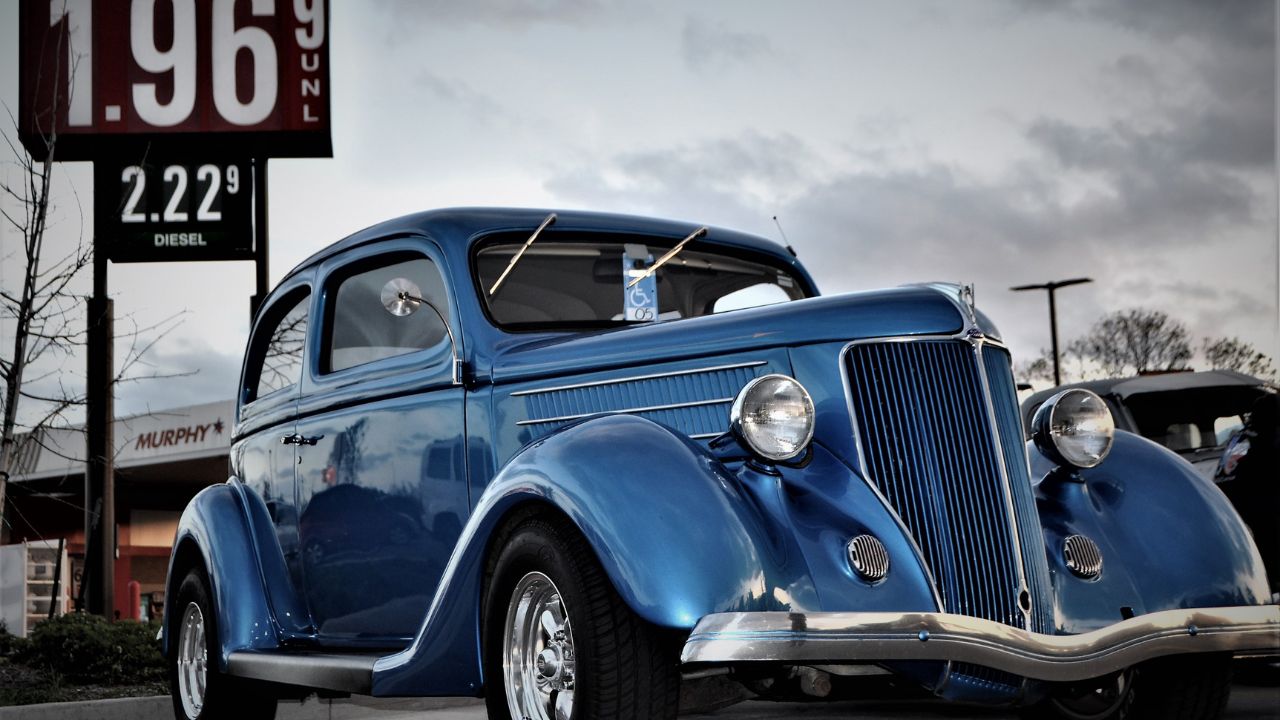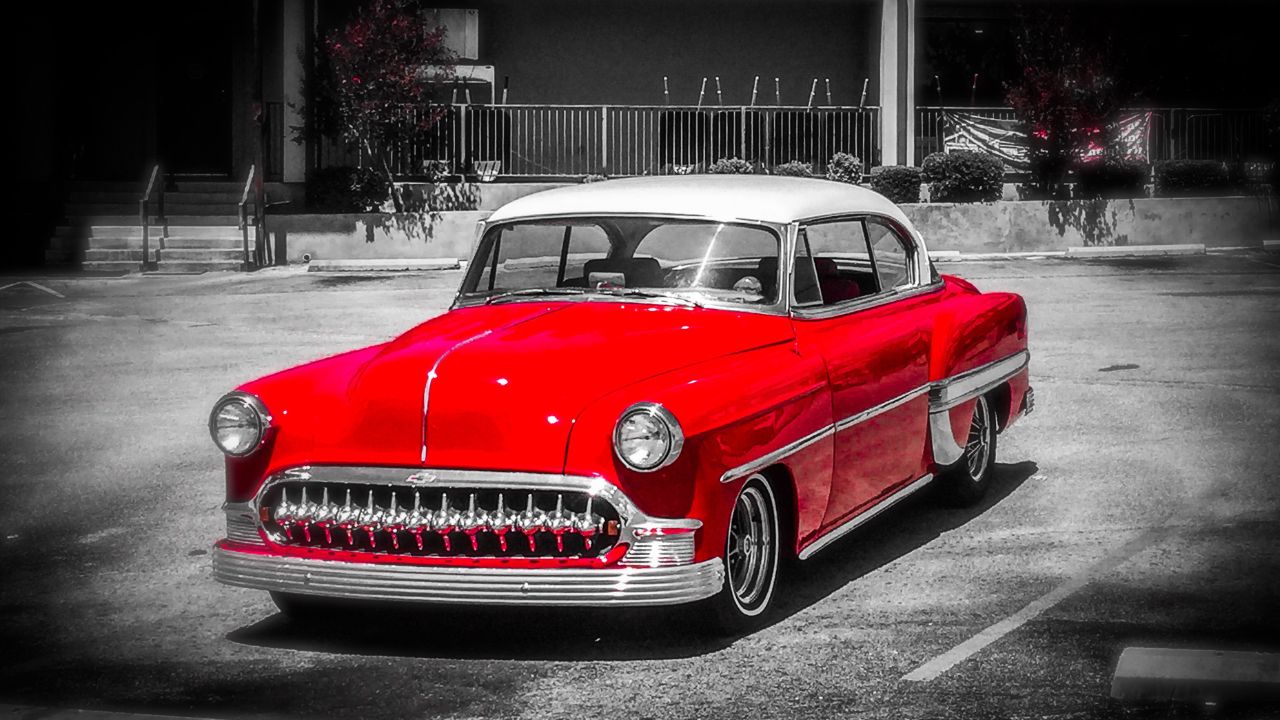
In 1957, the Chevy was an amazingly affordable car that was able to deliver incredible performance for an affordable price. Although it wasn't the first car with one horsepower per cubit, the 283 horsepower engine was still remarkable. Its low price also contributed to its popularity. Here are some reasons the 1957 Chevy is so beloved today. You can read on to learn more about the iconic car.
It was an automobile that was tailored for the rising middle class
General Motors Company was reorganized as General Motors Company in the 1920s. Sloan promised to make cars to suit all pockets and purposes. Sloan had seen a growing middle-class market searching for other options than the Model T Ford. With this group of Americans, GM was quickly on its way to surpassing Ford. The company's evolution was made possible by adapting the car to the middle class market.

It was a vehicle that captured the spirit, culture, and character of the era.
The 57 Chevrolet was a great car of its time. John Kraman (director of consignments at Mecum Auctions Marengo Illinois) said it was a landmark car in Chevrolet's past and reflected the spirit the era. The mid-'50s era was synonymous with youthful spirit, and the car was a perfect representation of that culture.
GM executives wanted to create a new model of the 1957 Chevrolet, but production delays prevented them bringing it to market. Ed Cole (a Chevrolet engineer) was a significant part of the delay. His changes to cars increased their cost and created a new look. Ed Cole made several changes to the car, including a new dashboard and a sealed cowl. He also relocated the air ducts in the headlight pods. These changes created a unique chrome headlight, and a wider grille.
It was a car that was affordable
The car was a distant relative of the modern automobile, but it was still a popular choice for average Americans. This car was not the same as today's automobiles. It was built in 1957. 1957 was a different time in the world: polio vaccines had just been developed a couple years ago, and the telephone party phone was still a dream for many teenagers. The first commercial computers were massive devices that occupied entire rooms. The majority of European travelers traveled by ship to Europe in 1957. It took the SS United States, which was the flagship of the U.S. Merchant Fleet, four days to travel from New York to Southampton in England.

Americans had a new urban landscape created by the creation of interstate highways. Innovative and fashionable vehicles helped manufacturers compete for customers. The '57 Chevy was a great example of this. It was affordable and had a sporty, elegant look. Even had sleek tailfins. It was affordable and had an impact on consumers. It was a great moment to buy a Chevy.
FAQ
What are the different types of jobs available in car mechanic?
Three main areas of employment are available for car mechanics:
-
Automotive repair shops
-
Dealerships
-
Independent garages
Automotive repair shops
Most people think of this as the first step to becoming a mechanic. This is the best way to get started. You can either work at a shop owned by someone else or set up your own business.
If you are interested in working at a shop you will need to apply for membership to a union. After being accepted into the union, the union will provide training.
After completing the training, you'll be ready to start work.
Registering with the government is required if you intend to open a garage. You'll need to meet certain standards after you register.
Once you register, you'll receive a license that allows you to operate your garage.
Your license allows for minor repairs and spare parts sales. It will not permit you to fix major engine issues.
You will be expected to sell spare parts and also offer guidance and advice to customers.
Dealership jobs
Most dealerships employ mechanics who can specialize in a particular area of the car. They might be able to only fix brakes or replace tires.
Some dealers also have general mechanics that can handle all aspects.
Some positions require that applicants complete training before they can be allowed to work. This allows employers to pick the right candidates for their jobs.
Some dealerships hire students straight out of college. These graduates already know the basics of mechanical engineering and therefore have no problem learning about cars.
Independent garages
Independent garages don’t have to be associated with any particular dealer. They tend to be focused on high-quality service.
Independent garages have the ability to afford higher wages, as they aren’t associated with any one company. This makes them generally more well-paid than jobs at dealerships.
Independent garages don't necessarily make for better work environments. Many business owners prefer to manage their own businesses rather than delegating responsibility to others.
This could lead to you working long hours with little control over your day.
Additionally, you should expect to earn lower wages if employed by a dealership.
It's possible to switch between jobs. To work at a dealership you will need to contact your employer to see if he is open to the idea of hiring you.
If you prefer to work in an independent garage, you might consider applying directly to its owner.
Finding a new job is not always easy. There are many factors that affect how much you make.
You might also consider the vehicle type you repair, and whether extra labor is charged.
What is the difference?
The two are similar but not identical. An automotive technician maintains cars, while a mechanic repairs them.
A mechanic needs to be able and quick to use their manual dexterity. They should also be able correctly diagnose and repair any problems.
An automotive technician must be more technically proficient than a mechanic. They need to be able use tools such drills and wrenches, and read blueprints.
They must be able and competent to safely perform complicated procedures. They need to be familiar with various types of engines and electrical system.
They should also be able understand how different parts interact.
As a result, a mechanic usually earns less money than an automotive technician. Both careers have many options.
What is the length of an apprenticeship as an automotive mechanic?
It takes approximately three years to complete an automotive mechanic apprenticeship. This includes two years in school and two as an apprentice. The first year of training is spent in the trade. This includes theory and practical skills as well as safety procedures. You'll also learn how tools can be used safely and efficiently during this year. After you have completed the first year of training, you will be able to spend an additional year on-the job learning different trades. These years will offer you the opportunity to attend formal classes.
The final year of the program is spent gaining qualifications and becoming certified in the field. These include NVQs, which are obtained after passing industry-specific exams. In addition, there are HNCs (Higher National Certificates) that cover general subjects such as management, business administration, and customer service. City & Guilds certificates can be obtained for individuals who want to learn certain trades.
What qualifications are necessary to become a mechanic
A series of tests is required to be a mechanic. These include:
-
A general knowledge test
-
A practical exam
-
An apprenticeship test
These tests are intended to make sure you have a solid understanding of the basics of mechanics before you can start your career as a mechanic.
These tests will allow you to be a mechanic once you have passed them. But, you will still need an apprenticeship. This will involve training in your trade.
You'll need to attend classes and workshops to learn everything you need to know about repairing vehicles. Experienced mechanics will also be required.
To be a successful mechanic, you will need to have a high degree of concentration and attention. You'll need to pay close attention to every aspect of vehicle repairs.
To become a successful mechanic you'll need patience. If you don’t like following directions, then this career path may not suit you.
However, if you love cars or enjoy working on them, you might be happy in this field.
What qualifications do I need to be a truck mechanic?
This job requires you to be a skilled mechanic, although you do not need any formal training. Your experience is invaluable as you know how to diagnose problems quickly and efficiently.
Also, your knowledge of diesel technology will be a benefit as you can help us understand which parts are needed for our vehicles.
What are the requirements for an automotive technician?
You must have graduated high school or GED, with excellent English and math grades. Additionally, you will need to be proficient in reading and writing. You will need to pass a written test and then go through a series of practical exams before being allowed to start work.
Is being a mechanic apprentice hard?
It's not easy, but you learn fast, and there are many opportunities for advancement.
You will need patience and perseverance. You should also be able to repair cars, trucks, and motorbikes.
Customers and relatives can exert a lot on you. You shouldn't feel pressured to make decisions that you don't like.
It could be a great job choice if you love fixing cars. It's a job where you can earn a decent salary and build up your business.
But you may prefer another path. If this is the case, you might want to become a technician.
This is where you use your technical skills to support other workers. This could be a way to help technicians with their problems or to teach them new techniques.
Another option is becoming a service advisor. This is where you can offer advice and assistance to customers who bring their vehicles to a garage.
Your decision will be based on what your priorities are. There are many options, so you can choose the one that suits you best.
Statistics
- The U.S. Bureau of Labor Statistics (BLS) reports that the job outlook for automotive service technicians and mechanics is expected to decline by 4% from 2019 to 2029. (indeed.com)
- 52% of Mechanics in the United States think their salaries are enough for the cost of living in their area. (indeed.com)
- There were 749,900 jobs available for automotive service technicians and mechanics in 2016, which is expected to grow by six percent through 2026. (jobhero.com)
External Links
How To
How to properly diagnose your vehicle for repair
First, look at the symptoms of your car to determine if it needs repair. Follow these steps to properly diagnose your vehicle.
-
Check engine lights. The dashboard light indicators, including the engine light, oil pressure gauge, battery light indicator, coolant temperature gauge and RPM gauge, should be checked. If any of these indicators have been flashing continuously for several days it could mean that there is something wrong with your vehicle.
-
Check the treads of your tires. Tires that are worn can cause issues with handling and braking. It is also important to inspect the wheel treads. You should ensure that they are clean and smooth. The best way to do this is to remove the wheels and take them off. Use a flashlight to see how well the treads are worn.
-
Monitor the level and consistency of your brake fluid. You should always keep track of the amount of brake fluid in your vehicle. This ensures that your brakes work properly. Your brakes may fail if the brake fluid level drops.
-
Check the suspension system. It is common for vehicles to have a suspension system which absorbs shocks or vibrations. It improves control and allows for smoother accelerations or decelerations. Your vehicle might feel wobbly, or shake uncontrollably if it has a bad suspension. If you are unsure if your vehicle is suffering from a suspension problem, put weight on the front and rear axles to check the movement.
-
Examine your steering column. The steering columns are what connect the steering knob to the rest. Many accidents can cause damage to steering columns. You should replace the steering column if it is loose or weak.
-
The exhaust pipe should be observed. Exhaust pipes help move gases from the combustion chamber to the atmosphere. You can let harmful fumes into your home if your exhaust pipes crack or leak. It is also important to repair any bends in your tailpipe immediately.
-
Take a look at the underside of your hood. If you see anything unusual, take a look under the hood. There could be fluid leaking from your engine. If you smell something strange coming from your engine compartment you should call a professional technician.
-
Check the air filter. The air filter in your vehicle collects dirt and dust from the environment. A dirty filter can lead to a poor vehicle's performance. Replace your air filter regularly.
-
Check the fan belt. Your vehicle's fan belt connects the engine to the transmission. The engine will not turn if the fan belt breaks. Replacing the belt is simple. You only need a screwdriver or pliers to replace your belt.
-
Check the radiator hose and hoses. The radiatorhose carries water from your radiator to the engine. It can become cracked or damaged and leak hot liquid onto your engine. The hose can be repaired with a pair or needle-nosepliers, and a wire brush.
-
You should inspect the windshield wipers. Windshield wipers use electricity to clean away snow and rain. If they stop working, streaks could be left on your glass. Change the washer fluid to fix the problem.
-
Verify the condition of your battery cables. The battery cables provide power for the electrical systems in your car. When you replace batteries, make sure to disconnect the negative cable first. Failure to do so can damage your alternator.
-
You should check the headlights. Headlights are used to illuminate the road ahead. Poor visibility can result if the headlights don't function properly. To determine if your bulbs are out of date, check them.
-
Make sure you have your lights on. You can warn other drivers if you approach them at night. One that doesn't work could cause you to be distracted, and possibly lead to an injury.
-
Check your brakes. Before you get in a car accident, your brakes will be slowing down your vehicle. You may lose control of your vehicle and crash if the brakes don't function properly.
-
Change your oil. Oil keeps your engine lubricated. It prevents metal parts from rusting too quickly. It is recommended to change the oil once a month.